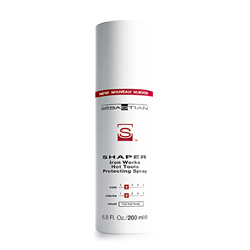For artifacts or architectural features made of iron, see ironwork.
An ironworks or iron works is a building or site where iron is smelted and where heavy iron and/or steel products are made. The term is both singular and plural, i.e. the plural of ironworks is ironworks.
An integrated ironworks in the 19th century usually included one or more blast furnaces and a number of puddling furnaces and/or a foundry with or without other kinds of ironworks.
Varieties of Ironworks
Ironworks is used as an omnibus term covering works undertaking one or more iron-producing processes. Such processes or species of ironworks where they were undertaken include the following (the detailed articles on each process should be consulted) or alternatively the History of Ferrous Metallurgy:
bloomeries - where bar iron was produced from iron ore by direct reduction;
Blast furnaces - which made pig iron (or sometimes finished cast iron goods) from iron ore;
foundries - where pig iron was remelted in an air furnace or in a foundry cupola to produce cast iron goods;
finery forges - which fined pig iron to produce bar iron, using charcoal as fuel in a finery (hearth) and coal or charcoal in a chafery (hearth);
potting and stamping forges with melting fineries using the first process in which bar iron was made from pig iron with mineral coal or coke, without the use of charcoal;
puddling furnaces - a later process for the same purpose, again with coke as fuel. It was usually necessary for there to be a preliminary refining process in a coke refinery (also called running out furnace). After puddling, the puddled ball needed shingling (metallurgy) and then to be drawn out into bar iron in a rolling mills. Primary Ironmaking
From the 1850s, pig iron might be partly decarburised to produce mild steel using one of the following:
For this period see History of the modern steel industry and Steelmaking.
The Bessemer process in a Bessemer converter, improved by the Gilchrist-Thomas process;
The Siemens-Martin process in an Open hearth furnace;
Electric arc furnace, introduced in 1907;
Basic oxygen steelmaking, introduced in 1952.
After bar iron had been produced in a finery forge or in the forge train of a rolling mill, it might undergo further processes in one of the following:
A slitting mill - which cut a flat bar into rod iron suitable for making into nails.
A tinplate works - where rolling mills made sheets of iron (later of steel), which were coated with tin.
A plating forge with a tilt hammer, a lighter hammer with a rapid stroke rate, enabling the production of thinner iron, suitable for the manufacture of knives, other cutlery, and so on.
A cementation furnace might be used to convert the bar iron (if it was pure enough) into blister steel by the cementation process, either as an end in itself or as the raw material for crucible steel. Further processing
Most of these processes did not produce finished goods. Further processes were opten manual, including
In the context of the iron industry, the term manufacture is best reserved for this final stage.
Manufacturing by blacksmiths or more specialist kind of smith.
It might be used in shipbuilding. Particularly notable ironworks
Coalbrookdale Ironworks
Cyfarthfa Ironworks at Merthyr Tydfil, Glamorgan, south Wales
Dowlais Ironworks also at Merthyr Tydfil
Thames Ironworks and Shipbuilding Co. Ltd, a shipbuilding firm on the banks of the River Thames, England
Iron town of Scunthorpe
 United States of America
United States of AmericaTřinec Iron and Steel Works in Třinec, Czech Republic
 Lefthit
Lefthit
No comments:
Post a Comment